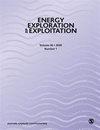斐济中尺度-微尺度(WRF-WAsP)风资源参数耦合方法评估
IF 1.6
4区 工程技术
Q4 ENERGY & FUELS
引用次数: 0
摘要
本研究分析了拟议的天气研究与预报-风图集分析和应用计划(WRF-WAsP)模型耦合方法,并评估了对西南太平洋热带地区小岛屿发展中国家斐济的风预测精度的提高情况。研究结果表明,如果有 10 年左右的高分辨率动态降尺度风资源数据,拟议的 WRF-WAsP 耦合方法可用作公用事业规模风力发电应用的风资源评估方法。分析还表明,最细(高分辨率)域(d03)的 1 km × 1 km WRF 模型数据最适合耦合 WRF-WAsP 进行风资源参数评估。WRF-WAsP 的耦合方法使斐济风资源参数评估的风预测精度提高了 0.2-6%。本文章由计算机程序翻译,如有差异,请以英文原文为准。
Evaluation of the mesoscale–microscale (WRF–WAsP) coupling methodology for wind resource parameters in Fiji
This study presents an analysis of the proposed Weather Research and Forecasting–Wind Atlas Analysis and Application Program (WRF–WAsP) models coupling methodology and evaluates the improvement in the accuracy of the wind predictions for the small island developing state (SIDS) of Fiji in the tropical Southwest Pacific region. The results revealed that the proposed WRF–WAsP coupling methodology can be used as a wind resource assessment methodology provided very-high resolution dynamically downscaled wind resource data is available in the order of 10 years for utility-scale wind power applications. The analysis also revealed that the 1 km × 1 km WRF model data from the finest (high-resolution) domain (d03) is best for coupling WRF–WAsP for wind resource parameters evaluation. The coupling methodology of WRF–WAsP improved the accuracy of the wind prediction by 0.2–6% for the wind resource parameters evaluated for Fiji.
求助全文
通过发布文献求助,成功后即可免费获取论文全文。
去求助
来源期刊

Energy Exploration & Exploitation
工程技术-能源与燃料
CiteScore
5.40
自引率
3.70%
发文量
78
审稿时长
3.9 months
期刊介绍:
Energy Exploration & Exploitation is a peer-reviewed, open access journal that provides up-to-date, informative reviews and original articles on important issues in the exploration, exploitation, use and economics of the world’s energy resources.
 求助内容:
求助内容: 应助结果提醒方式:
应助结果提醒方式:


